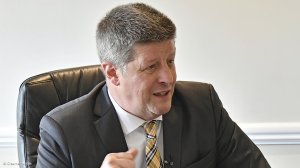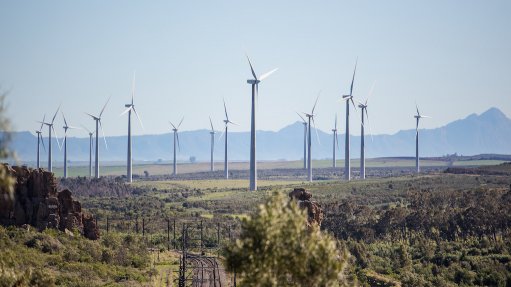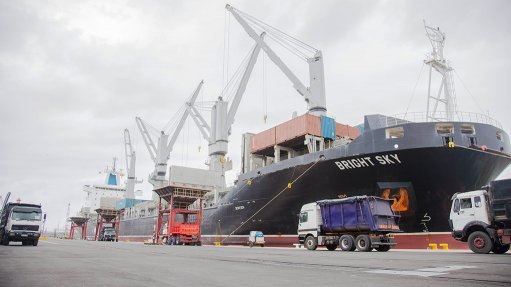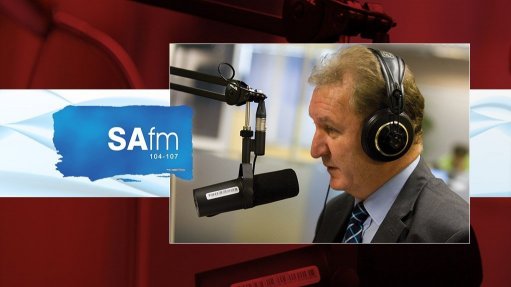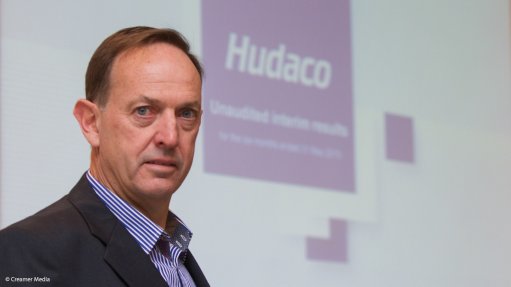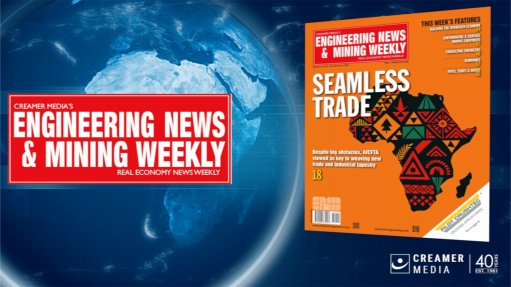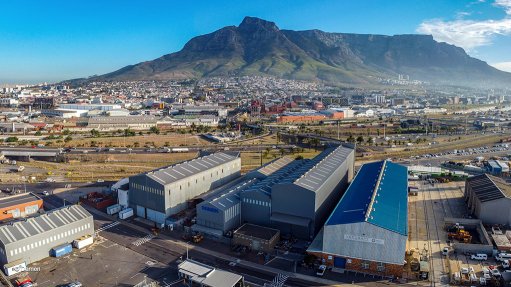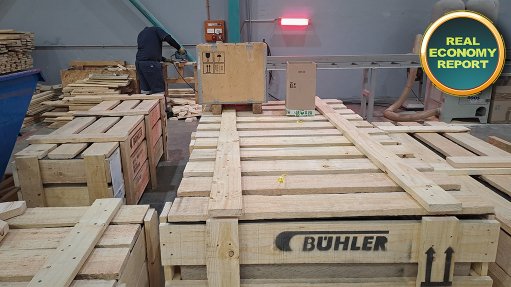Anglo spearheading exciting new clean hydrogen mobility initiative across Europe
JOHANNESBURG (miningweekly.com) – Platinum-based hydrogen fuel cell electric vehicles (FCEVs) received a major boost on Wednesday with the announcement of an initiative to deploy new fleets of zero-emission FCEV taxis in Europe.
With nearly 500 000 pilot project passenger journeys across six-million kilometres taking place as part of a pilot project that began in 2023, a strong thumbs up is now being given to FCEVs, which are particularly well suited to vehicle fleets such as taxis and buses.
Underpinned by the European Union’s Alternative Fuels Infrastructure Regulation implemented in April, momentum around the provision of hydrogen refuelling infrastructure is now proceeding at pace.
Fittingly, the Johannesburg Stock Exchange- and London-listed Anglo American is collaborating with the world’s largest FCEV taxi operator Hype, which is the official taxi provider to the upcoming Paris Olympics. Two new fleets of zero-emission FCEVs are being deployed, 250 in Paris and 50 in Brussels.
This is all part of H2 Moves Europe, which is designed to encourage the adoption of FCEV technology as a contributor to globally essential clean transport.
“Hydrogen-powered FCEVs are expected to play a significant role in the mix of clean drivetrain technologies needed to effectively decarbonise transport,” Anglo executive market development head Benny Oeyen stated in a release to Mining Weekly.
The fleets will include a mixture of fuel-cell-powered Peugeot e-Expert and Citroen e-Jumpy vehicles adopted for wheelchair users, as well as Toyota Mirai and Hyundai Nexo cars.
H2 Moves Europe is building on the success of the trailblazing H2 Moves Berlin project propelled by the contributions of Toyota Germany and SafeDriver Group-ENNOO.
Through H2 Moves Europe, and the new collaboration with Hype in Paris and Brussels, Anglo hopes to demonstrate still further the many range and refuelling benefits of FCEV technology to wider audiences of car buyers,
This will build on the success of existing FCEV deployment initiatives in Berlin, China and South Africa. Earlier this year, vehicle manufacturer BMW launched a fleet of hydrogen-fuelled cars on South Africa’s roads, supported by a green hydrogen refuelling infrastructure at its campus in Midrand, Johannesburg.
Of crucial importance to the economy of South Africa is that the transition to 6% to 7% of FCEVs globally could see a potential for two- to five-million ounces of platinum demand.
The outcome of BMW, Anglo American Platinum and South Africa’s long-standing hydrogen producer Sasol finding common ground was the launch on Valentine’s Day of the heavenly BMW iX5 Hydrogen passenger car, which Engineering News & Mining Weekly can confirm infinitely outstrips the ‘sheer driving pleasure’ slogan of the already top-rated BMW mobility brand.
Tested by enthusiastic media on local South African roads, the BMW iX5 Hydrogen combines long-distance capability and short refuelling stops with emission-free driving – an absolutely necessary advance to save Mother Earth from climate change catastrophe.
The BMW iX5’s 6 kg of hydrogen allows for a 500 km range, with the car’s platinum-based fuel cell turning green Sasol hydrogen into perfectly clean electricity that powers the quiet drive train.
It is no coincidence that South Africa, with its superior sun, prime wind and abundance of platinum group metals (PGMs), is one of only ten countries currently traversed by BMW’s latest green hydrogen masterpiece.
What the car world loves about hydrogen is that it is not only the planet’s most abundant energy source but that it is also a transport vector with a storage magnitude that ensures that renewable energy can be offered even when the sun is not shining and the wind is not blowing.
Growing the market for hydrogen-fuelled mobility solutions has been declared a key pillar of the South African government’s green hydrogen economy strategy, which will lower carbon emissions meaningfully, unlock investment enormously, create jobs, and drive demand for this country’s magical PGMs.
It must be borne in mind that one cannot get a more sustainable fuel than hydrogen with 75% of the entire universe being hydrogen and 70% of Planet Earth being covered by water, made up of a hydrogen molecule and two oxygen molecules.
There are no carbon emissions in creating it from renewable sources and there are no carbon emissions in using it as the by-products are heat, electricity and water.
“We are going to see this unique little element offer us a potential way out of our climate crisis,” BMW hydrogen programme director Deena Govender commented to Engineering News & Mining Weekly.
Interestingly, Hype has been a global showcase for the benefits of hydrogen mobility since 2015.
“We’re glad to collaborate with Anglo American to increase our reach and pursue our growth objectives in Paris and in new markets such as Brussels,” Hype CEO Mathieu Gardies commented.
As a leading global producer of the platinum needed for fuel cells, Anglo has been an early supporter of FCEV technology.
When used in a fuel cell, platinum catalyses a chemical reaction between hydrogen and oxygen to generate clean electricity.
This is then used to power the motor of an FCEV, which can be refuelled in five minutes with ranges of up to 650 km, just like a petrol or diesel vehicle but with zero exhaust emissions. Through H2 Moves Europe, and other FCEV-focused efforts, Anglo American actively supports the emerging ecosystem of hydrogen-powered transport globally.
Owing to the state of geopolitics, more countries are targeting energy independence through renewables and hydrogen and collaboration is going to be key given that the hydrogen economy spans so many industries.
Anglo executive head of projects and environment Prakashim Moodliar described as fantastic the collaboration already under way with BMW and Sasol on the demonstration launch of the BMW iX5 Hydrogen in South Africa.
“The hydrogen economy unpacks fantastic value for South Africa and for us as PGM miners, with platinum and iridium used both in the generation of green hydrogen and the opportunities in PEM electrolysers and in FCEVs,” Moodliar added.
One of South Africa’s big economic opportunities is to decarbonise the vehicles on its roads and FCEVs allow for the best of electric vehicles minus emissions while still allowing for conventional travel distance and refuelling time.
Anglo started on this journey in South Africa two years ago with the launch of its zero-emissions haulage solution at the Mogalakwena PGMs mine in Limpopo, where it ran a fuel cell in a 510 t haulage truck.
One hydrogen haul truck eliminates the deleterious carbon emissions of the equivalent of 700 cars, First Mode global hydrogen sourcing director James Betts has pointed out.
Rather than being viewed in isolation, Betts conceives hydrogen haul trucks as just one way of bringing about a holistic decarbonisation of many aspects of mine sites.
“The really beautiful thing about hydrogen, and this is why I'm so very passionate about it, is that it comes with a system. There are the haul trucks, the trains, and there's ammonium nitrate, which is used in explosives in mining, the base of that being hydrogen.
“There’s a whole ecosystem around that, and so rather than thinking about each of these individual use cases, one of the things we really need to start taking seriously is hydrogen in the system.
“Hydrogen on a standalone use case basis is where we're struggling commercially to make it feasible, but if you can bring that broader picture into play, it's a very, very smart and tidy solution, especially within the context of hubs and initiatives and the hub-and-spoke concept for multiple use cases.
“I think mining is absolutely key for the introduction of hydrogen and hence we'll be focusing our attention on trying to drive a bunch of innovations in that space to make it happen,” Betts told last month’s World Hydrogen Australia.
“We think that hydrogen vehicles are part of the future of zero-emission mobility and many people are talking about hydrogen in heavy-duty trucks, but we think that hydrogen also plays a role in light-duty vehicles and passenger cars,” BMW Group programme manager: hydrogen technologies Dr Juergen Guldner emphasised.
“The hydrogen car basically is an electric car. It uses hydrogen as the energy instead of electricity that is stored in a battery but you have all the advantages of electric drive, like the great acceleration, silent ride, zero emission and, because it’s hydrogen, you can refuel the cars in just three to four minutes,” Guldner added.
Sasol has begun to feed its 60 MW electrolyser on site at Sasolburg with 3 MW of solar energy generated on the premises.
That has enabled the company to commence the production of 150 kg of green hydrogen a day.
While that is under way, the commissioning of a wind farm project being developed in the Eastern Cape is allowing for the feeding in of 65 MW of renewable power into its Sasolburg electrolyser.
That will enable Sasol to produce 3.5 t of green hydrogen a day at commercial scale.
“We believe there is a role to play, especially in the hard-to-abate, heavy-duty segment of transport and there we’re working with several of our partners to explore what is it that we can do and how do we get hydrogen into these vehicles,” Sasol principal market development specialist: green hydrogen Dries Swanepoel highlighted.
Comments
Announcements
What's On
Subscribe to improve your user experience...
Option 1 (equivalent of R125 a month):
Receive a weekly copy of Creamer Media's Engineering News & Mining Weekly magazine
(print copy for those in South Africa and e-magazine for those outside of South Africa)
Receive daily email newsletters
Access to full search results
Access archive of magazine back copies
Access to Projects in Progress
Access to ONE Research Report of your choice in PDF format
Option 2 (equivalent of R375 a month):
All benefits from Option 1
PLUS
Access to Creamer Media's Research Channel Africa for ALL Research Reports, in PDF format, on various industrial and mining sectors
including Electricity; Water; Energy Transition; Hydrogen; Roads, Rail and Ports; Coal; Gold; Platinum; Battery Metals; etc.
Already a subscriber?
Forgotten your password?
Receive weekly copy of Creamer Media's Engineering News & Mining Weekly magazine (print copy for those in South Africa and e-magazine for those outside of South Africa)
➕
Recieve daily email newsletters
➕
Access to full search results
➕
Access archive of magazine back copies
➕
Access to Projects in Progress
➕
Access to ONE Research Report of your choice in PDF format
RESEARCH CHANNEL AFRICA
R4500 (equivalent of R375 a month)
SUBSCRIBEAll benefits from Option 1
➕
Access to Creamer Media's Research Channel Africa for ALL Research Reports on various industrial and mining sectors, in PDF format, including on:
Electricity
➕
Water
➕
Energy Transition
➕
Hydrogen
➕
Roads, Rail and Ports
➕
Coal
➕
Gold
➕
Platinum
➕
Battery Metals
➕
etc.
Receive all benefits from Option 1 or Option 2 delivered to numerous people at your company
➕
Multiple User names and Passwords for simultaneous log-ins
➕
Intranet integration access to all in your organisation




